How to mesh multiple sourcebooks into your single D&D campaign
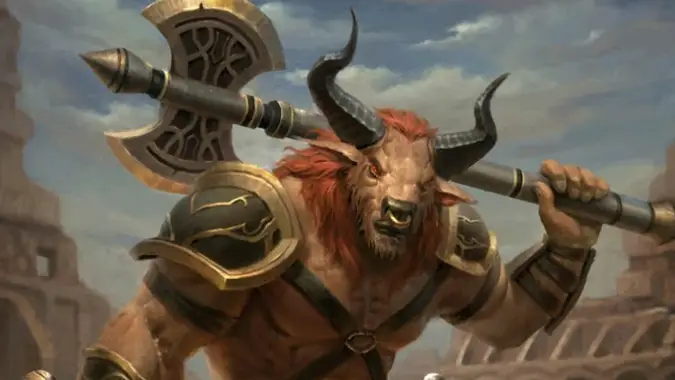
In the past year, Wizards of the Coast released Mythic Odysseys of Theros, one of my favorite current supplements for the 5th Edition of Dungeons and Dragons, inspired by Greek Mythology, and pretty close to that, Arcanum Worlds released Odyssey of the Dragonlords, which is also inspired by Greek Mythology. Both are campaign settings, although Odyssey of the Dragonlords is more of a mega-adventure — similar in scope and design to books like Descent into Avernus or the video games that Arcanum Worlds’ founders James Ohlen and Jesse Sky worked on for years at Bioware. The two books take different approaches — the Theros book has an adventure in it, but it’s much more a detailed world setting, for use in home campaigns. OotD absolutely has a vibrant setting of its own, but most of the focus is on the adventure it contains, the specific story, while Theros is more broad.
And in my eyes, that means that I feel like both books would work extremely well together. Theros and OotD adapt almost exactly the same races, with Centaurs, Minotaurs and Satyrs playable in both. They both have pantheons of Greek Mythology inspire Deities, and the island of Thylea and its accompanying seas (and the smaller islands that are contained within those seas) could easily be fit to the south and west of Theros’s Siren Sea. The various gods and Titans of Thylea could easily be pitted against the divinities of Theros.
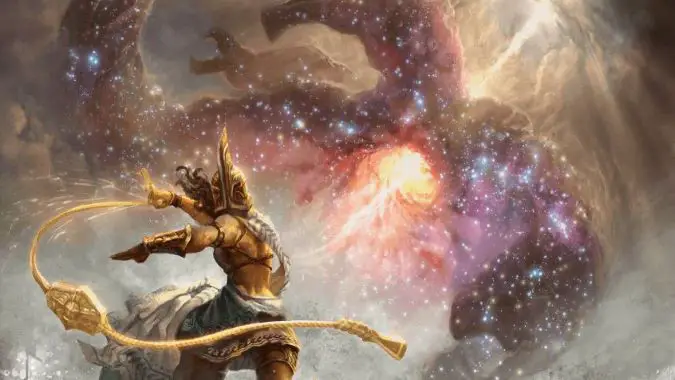
How to join worlds together in your game
So far, I’ve been talking about two specific settings in published works for Dungeons and Dragons 5th Edition. But as a game master running any game system, you can adapt multiple sources and bridge ideas that were never intended to work together. Over the years a lot of sourcebooks have been published that were intended to be used in this way — Green Ronin’s Freeport setting is easily incorporated into any campaign world you happen to be using, whether it’s your homebrew setting or a published one like Eberron or Faerun. For the purposes of this post, I’ll use Theros and Thylea as examples of how to go about this merger of disparate sources into one game.
First off, it’s often easiest to do this by simply plopping the ideas you want to use into separate areas. If you are already running a game set in a medieval fantasy milieu and you decide you want to run a module set in a lost city in the desert, just plop a desert onto your map and locate the city there. I did this when running Tom Moldvay’s excellent The Lost City — which is set on the Known World of the original D&D setting, Mystara — in my original Pathfinder campaign back in 2010. I just put a desert in my campaign world (a version of which I’m currently using for the Blizzard Watch D&D stream campaign) and plopped the Lost City there.
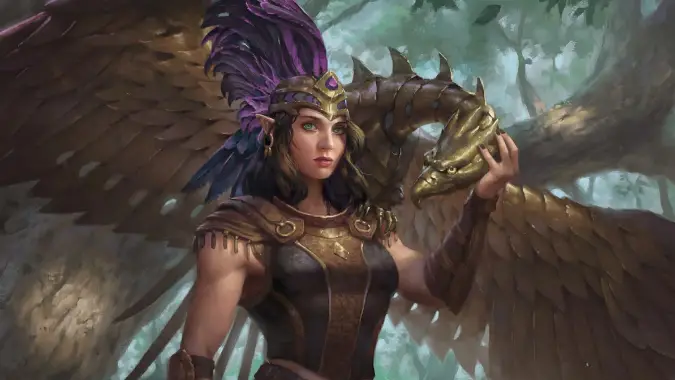
You can merge the sources to go deeper and more complex
For combining Thylea and Theros, the easiest idea would be to put the island of Thylea and the Forgotten Sea that surrounds it at a remove from Theros — a large island that would require significant sailing to reach it. Essentially, if Mainland Theros is the ancient Greece of this combination, Thylea is Crete — a land with deep connections culturally and historically to Greece, but its own history and legends that influenced and were influenced by the other in turn.
You don’t have to do it this way. If you’d prefer and it would work better for your campaign, you can merge the sources — take the landmass of Theros and places the cities and locations of Thylea on it, perhaps replacing some of Theros’ city-states, or just having all of them exist as rivals to one another. Mytros and Meletis could be rival cities much as Athens and Thebes were, while Akros and Aresia fought for military dominance much as Sparta did with Argos and Messenia. The inclusion of the cities of both settings in one region helps simulate the complex relationships between actual Greek polis better than either book manages on their own. While I love both Theros and Thylea, the fact is, neither setting matches how vibrant and sophisticated ancient Greece actually was, but by having more options you can get a lot closer.
Another example are the playable races of both settings. Both Theros and Thylea have their own takes on Minotaurs, Centaurs, and Satyrs. Theros also has the Leonin and Triton races, while Thylea has Nymphs, Medusas, and Sirens. For the most part, there’s not much difficulty here in meshing the various races from each setting, and even when there seems to be contradictions, they can be dealt with. For example, in Thylea, it’s said that Minotaurs are descended from Humans cursed by the gods (in this case the vicious Sydon) while in Theros, Minotaurs are dominated by the vicious Mogis. You could pretty easily just say that Mogis is Sydon, or that after Sydon cursed the Minotaurs, some sailed away and landed in Phoberos and Skophos where Mogis found and enslaved them.
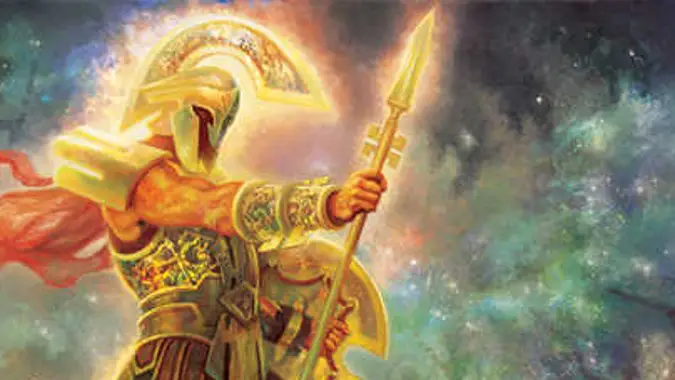
The syncretic approach to mythology can work in your games too
Both settings have their own cosmologies and pantheons of deities as well, but again, you can go syncretic here in a variety of ways. The easiest way is to just assume that the gods of Theros and the gods of Thylea don’t mix much. Each controls their own area, which works best if you keep them separate instead of merging the two areas. However, in real history, religious thought crosses borders.
The myth of Aphrodite is heavily inspired by myth cycles from the ancient Near East, for example, and Adonis is borrowed straight from Canaanite sources, while the Greeks heavily borrowed from Egyptian mythology (Herodotus even believed the myth of Dionysos was based on that of Osiris, for just one example). You can choose to combine these pantheons in a variety of ways — perhaps replace the Five Gods of Odyssey of the Dragonlords with the larger and more sophisticated pantheon of Theros, while still leaving the Titans of Thylea as rivals and monsters for the Therosian pantheon and their worshippers to oppose. Sydon and Lutheria from OotD would make excellent enemies for Heliod, Ephara, or Iroas.
And you don’t even need to lose the gods of Thylea to accomplish this — just say that in Thylea, the people call Iroas by the name Pythor, and Heliod is known as Helios there. Ephara is known as Mytros. It’s not hard to come up with an approach that suits your campaign and run with it, whether it’s a completely syncreticism that borrows heavily from both sources or a more selective one that picks and chooses which ones you want to use.
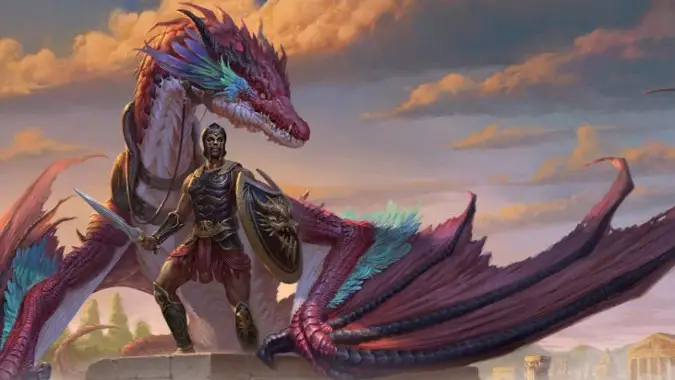
An example with a lot of spoilers in it
For example, and this one has some spoilers for Odyssey of the Dragonlords here, so be warned.
No, seriously, I’m going to spoil the central story element of the whole adventure so if you don’t want to see that, don’t keep reading. Skip the next paragraph.
Okay, still here? Good.
If you’ve read Odyssey of the Dragonlords, you know that Mytros, Volkan, Pythor, Kyrah, and Vallus (plus Narsus and Helios) weren’t actually gods, but rather powerful dragons. So how do I justify having the gods of Theros also be the gods of Thylea in opposition to Sydon and Lutheria? Actually, it’s really simple. Since we know that Thylea was settled by people from across the ocean (and it’s never specified in the book) then assume that the Dragonlords were led to Thylea from Theros by dragons that were more intelligent than the ones that remain in that land, potent wyrms that directly worshipped the gods of Theros. Five of those dragons, mighty clerics of their gods, led the Dragonlords and sought to bring the worship of their gods to Thylea to replace Sydon, Lutheria and the other Titans of the land like Thylea herself and her consort Kentimane. Thylea the Great Mother they eventually reached a mutual relationship with, and in fighting the others, they so identified with their gods that to the common mortal races who were settling the former empire of the Cyclopes that once ruled the island, they effectively were those gods.
So you can keep the Five Gods, say that they’re the local names for various Therosian gods, and only at the end of the story reveal that Pythor, Volkan, Kyrah, Vallus, and Mytros were in fact divine champions whose gods moved so directly through them that they became avatars of said gods. The climax of the adventure retains the startling reveal as the Five Gods return to their dragon forms, and their divine patrons choose new exemplars to oppose Sydon and Lutheria — the PCs of the party.
Spoiler free zone from here on out.
This is just one way you can do it, of course. But it can be rewarding to choose multiple sources and combine them in this way. You can run Descent into Avernus in your home campaign which isn’t set on the Faerun of the Forgotten Realms D&D setting, just replacing Baldur’s Gate with a city on your world, or you can just plop Baldur’s Gate itself directly onto your world if that serves your needs.
The real trick is in remembering that, when it comes to your home game, the only limitation is self imposed. If you want to run a space campaign which is equal parts Star Trek, Star Wars, and Krull (yes, Krull, it was space fantasy, Liam Neeson and Robbie Coltrane were in it) then you can absolutely do that. One time, I ran a six month campaign which basically said What if Thedas from Dragon Age was actually a planet in the Milky Way that survived the Reapers, and all the magic and stuff was just Biotics from tainted Eezo so if I could do that, you can totally run that Sailor Moon vs. Hello Kitty campaign you’ve always wanted.
Please consider supporting our Patreon!
Join the Discussion
Blizzard Watch is a safe space for all readers. By leaving comments on this site you agree to follow our commenting and community guidelines.
 @MatthewWRossi
@MatthewWRossi



